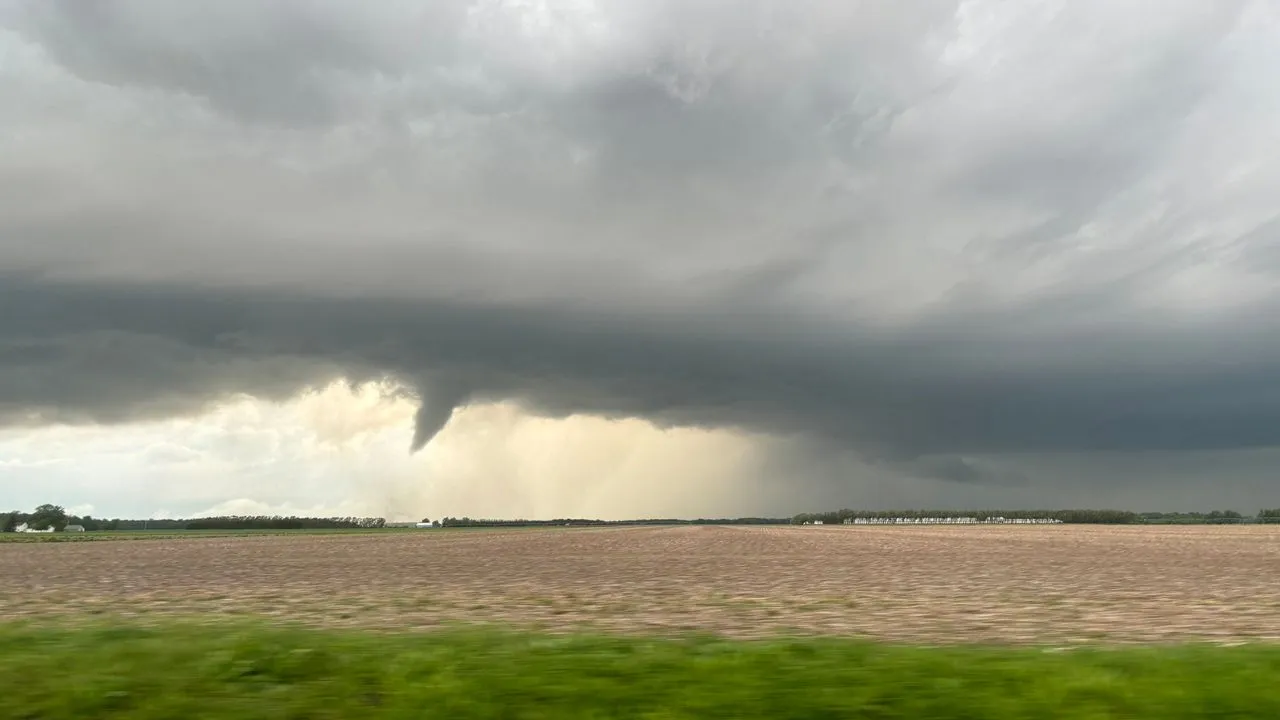COLUMBUS, Ohio — After 2024 entered Ohio's history as the worst tornado year in terms of numbers, leaving behind destroyed homes, fatalities, and millions in damages, residents of Buckeye State are watching the sky with concern in 2025. According to the National Weather Service (NWS), as of June 9 this year, Ohio has recorded 18 tornadoes — significantly fewer than the 74 tornadoes that struck the state last year, but enough to keep communities on edge. As climate change intensifies extreme weather events, Ohio is preparing for an unpredictable season that may bring new challenges.
Last year's record — 74 tornadoes, surpassing the previous maximum of 62 in 1992 — became a tragic milestone. Just one day, March 14, 2024, an EF3 tornado in Logan County claimed three lives, destroyed 175 homes, and left over a thousand people homeless. "It was like the end of the world," recalls Ann Carter, a resident of Lakeview, whose house was destroyed. Insurance estimates for the damages caused by the 2024 tornadoes reached tens of millions of dollars, and rebuilding in some communities is still ongoing.
The current season, although less intense so far, has already demonstrated its power. According to NWS data in Wilmington, the 18 tornadoes recorded by June 9 range from weak EF0 to stronger EF2, which passed through Powell and Putnam counties on April 2, leaving damaged buildings and downed trees. The longest track — 15.61 miles — was covered by an EF1 tornado in Van Wert and Putnam counties, while the shortest, just 0.1 miles, was recorded on April 25 in Dark County. "Although we're seeing fewer tornadoes than last year, their unpredictability keeps us vigilant," says Kristen Cassady, NWS meteorologist in Wilmington.
The tornado season in Ohio, usually peaking between April and June, began earlier this year, with the first tornadoes occurring on March 30. Meteorologists attribute this to an abnormally warm spring and strong wind streams transporting moist air from the Gulf of Mexico. "March is not typically a peak month, but it is increasingly bringing tornadoes due to climate shifts," explains Cassady. According to NWS data, the nature of damage — chaotically crossed uprooted trees and debris — helps distinguish tornadoes from other storms, such as microbursts, which are often confused with tornadoes due to similar destructive power.
Experts warn that 2025 may present another test for Ohio, especially considering the transition from La Niña to a neutral El Niño state, which, according to NOAA, could increase weather instability in the Ohio River Valley. Logan Clark, NWS meteorologist, notes that warmer winters and minimal ice cover on the Great Lakes — as seen in 2024 — create conditions for early and frequent tornadoes. "We see how climate is changing the game," he says.
For communities still recovering from the 2024 tornadoes, each new storm season brings not only physical but also emotional stress. In Warren County, where three EF0 tornadoes were recorded on April 3, local resident Sarah Miller says, "We now keep the weather radios on around the clock. No one wants to take any chances after last year." Local authorities, responding to criticism about insufficient preparedness, are expanding training programs for Skywarn volunteers and installing additional sirens in rural areas.
Meanwhile, activists like Helen Norris, director of emergency management in Logan County, are calling for improved infrastructure for warning systems. "Sirens are only part of the solution," she says. "People need weather apps and evacuation plans." According to NWS, tornadoes in Ohio are often accompanied by severe thunderstorms, hail, and heavy rain, complicating response efforts. In 2025, as in previous years, NWS continues to improve tornado confirmation methods, utilizing ground surveys to analyze damage patterns.
As Ohio prepares for the remainder of the season, a broader context sparks concern. Data from NOAA indicates that 2024 was the second most active tornado year in the US after 2011, with over 1,150 preliminary reports nationwide. In 2025, although Ohio is currently behind last year's pace, meteorologists warn that July and August could bring new outbreaks. "It's not just weather," says Aaron Wilson, the state climatologist of Ohio. "It's a new reality that we all need to adapt to."
For a state that has already experienced a record disaster, 18 tornadoes in 2025 are not just statistics but a reminder of the fragility before nature. Whether Ohio can avoid repeating last year's chaos depends on community readiness and the vigilance of meteorologists who tirelessly watch the horizon.



